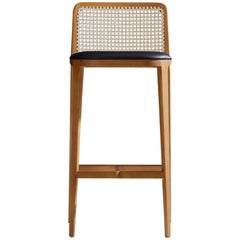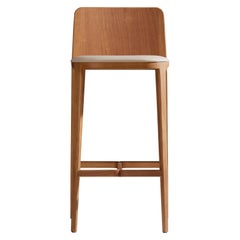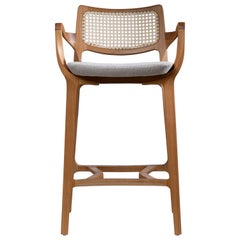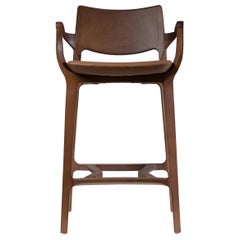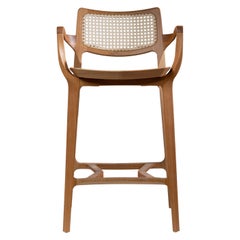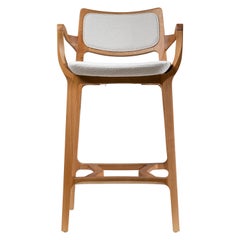Simonini Counter Stool
2010s Brazilian Modern Chairs
Faux Leather, Leather, Textile, Hardwood, Wood, Cane
2010s Brazilian Modern Chairs
Textile, Cane, Wood, Hardwood
2010s Brazilian Modern Chairs
Faux Leather, Leather, Textile, Hardwood, Wood, Cane
2010s Brazilian Post-Modern Chairs
Leather, Textile, Upholstery, Faux Leather, Cane, Hardwood, Walnut
2010s Brazilian Post-Modern Chairs
Leather, Textile, Upholstery, Faux Leather, Cane, Hardwood, Walnut
2010s Brazilian Post-Modern Chairs
Leather, Textile, Upholstery, Faux Leather, Cane, Hardwood, Walnut
2010s Brazilian Post-Modern Chairs
Leather, Textile, Upholstery, Faux Leather, Cane, Hardwood, Walnut
People Also Browsed
Mid-20th Century Italian Mid-Century Modern Wall Lights and Sconces
Blown Glass, Murano Glass
2010s American Modern Chandeliers and Pendants
Brass, Bronze, Enamel, Nickel
Antique Mid-19th Century Italian Classical Roman Architectural Elements
Marble
Vintage 1980s American Post-Modern Chairs
Wood
Vintage 1960s Italian Mid-Century Modern Chairs
Bouclé, Wood
Antique Early 19th Century European Industrial Sideboards
Pine
Vintage 1950s Danish Scandinavian Modern Desks and Writing Tables
Rosewood
2010s Philippine Mid-Century Modern Wall Lights and Sconces
Rattan
Vintage 1930s French Louis XVI Console Tables
Oak
Mid-20th Century Unknown Scandinavian Modern Loveseats
Sheepskin, Wood
2010s Side Tables
Lacquer
Early 2000s Italian Mid-Century Modern Chandeliers and Pendants
Brass
21st Century and Contemporary Indonesian Post-Modern Console Tables
Wood, Walnut
21st Century and Contemporary Indian Wall Mirrors
Brass
Vintage 1950s Dutch Mid-Century Modern Lounge Chairs
Cotton, Beech
Vintage 1960s Italian Mid-Century Modern Chaise Longues
Rattan
Simonini Counter Stool For Sale on 1stDibs
How Much is a Simonini Counter Stool?
SIMONINI for sale on 1stDibs
SIMONINI is a modern furniture design studio dedicated to creating the classics of tomorrow. Its responsibly sourced hardwood furniture is made to stand the test of time while maintaining its beauty and charm. SIMONINI specializes in designing and producing chairs, particularly dining room chairs, stools and armchairs. The company’s signature sleek style also informs its elegant dining tables and chic patio furniture.
SIMONINI was founded by designer Daniel Simonini and is headquartered in São Paulo, Brazil, and Milan, Italy. Simonini, born in Brazil in 1986, holds a master’s degree in industrial and interior design from SPD Scuola Politecnica di Design in Milan. After graduating, he worked for many esteemed design studios like Studio Laviani, Lissoni Associati, Lomography and Palomba Serafini. During the early years of his career, Simonini gained substantial experience in designing furniture and decorative objects for both mass and niche markets.
When Simonini founded his self-named studio in 2012, he chose to specialize in furniture design. The goal was to use only the highest quality materials and expert techniques to manufacture exclusive pieces for discerning clients. In every new design, Simonini seeks to find a balance between form and function, bringing greater harmony to living interiors.
In addition to his own company, Simonini has partnered with Milan designer Niccolò Adolini on a furniture line under the Adolini+Simonini brand.
On 1stDibs, find SIMONINI seating, tables, garden furniture and more.
On the Origins of Brazil
More often than not, vintage mid-century Brazilian furniture designs, with their gleaming wood, soft leathers and inviting shapes, share a sensuous, unique quality that distinguishes them from the more rectilinear output of American and Scandinavian makers of the same era.
Commencing in the 1940s and '50s, a group of architects and designers transformed the local cultural landscape in Brazil, merging the modernist vernacular popular in Europe and the United States with the South American country's traditional techniques and indigenous materials.
Key mid-century influencers on Brazilian furniture design include natives Oscar Niemeyer, Sergio Rodrigues and José Zanine Caldas as well as such European immigrants as Joaquim Tenreiro, Jean Gillon and Jorge Zalszupin. These creators frequently collaborated; for instance, Niemeyer, an internationally acclaimed architect, commissioned many of them to furnish his residential and institutional buildings.
The popularity of Brazilian modern furniture has made household names of these designers and other greats. Their particular brand of modernism is characterized by an émigré point of view (some were Lithuanian, German, Polish, Ukrainian, Portuguese, and Italian), a preference for highly figured indigenous Brazilian woods, a reverence for nature as an inspiration and an atelier or small-production mentality.
Hallmarks of Brazilian mid-century design include smooth, sculptural forms and the use of native woods like rosewood, jacaranda and pequi. The work of designers today exhibits many of the same qualities, though with a marked interest in exploring new materials (witness the Campana Brothers' stuffed-animal chairs) and an emphasis on looking inward rather than to other countries for inspiration.
Find a collection of vintage Brazilian furniture on 1stDibs that includes chairs, sofas, tables and more.
Materials: Cane Furniture
If the interiors people have been saving on Instagram lately are any indication, we’ll be seeing a lot more antique, new and vintage cane furniture in the years ahead.
Cane — the material of the moment that is inspiring a new generation of designers — has been cropping up everywhere, from sleek armchairs to lounge chairs, side tables and desks.
In case you’re wondering, cane refers to the peeled-off bark of rattan, an Old World species of climbing palm, while wicker may be used to describe natural or synthetic materials that were woven into a pattern. Raffia, another term thrown around when discussing woven furniture, refers to a palm tree native to tropical regions in Africa.
Of course, designers’ obsession with traditional artisanal techniques is nothing new. Marcel Breuer’s tubular Cesca chair, a design originally conceived in the 1920s, has drawn renewed attention in the past few years. And the popularity of materials like raffia and wicker reflects our desire for all things handmade.
Find a wide range of antique, new and vintage cane furniture on 1stDibs.
Finding the Right Chairs for You
Chairs are an indispensable component of your home and office. Can you imagine your life without the vintage, new or antique chairs you love?
With the exception of rocking chairs, the majority of the seating in our homes today — Windsor chairs, chaise longues, wingback chairs — originated in either England or France. Art Nouveau chairs, the style of which also originated in those regions, embraced the inherent magnificence of the natural world with decorative flourishes and refined designs that blended both curved and geometric contour lines. While craftsmanship and styles have evolved in the past century, chairs have had a singular significance in our lives, no matter what your favorite chair looks like.
“The chair is the piece of furniture that is closest to human beings,” said Hans Wegner. The revered Danish cabinetmaker and furniture designer was prolific, having designed nearly 500 chairs over the course of his lifetime. His beloved designs include the Wishbone chair, the wingback Papa Bear chair and many more.
Other designers of Scandinavian modernist chairs introduced new dynamics to this staple with sculptural flowing lines, curvaceous shapes and efficient functionality. The Paimio armchair, Swan chair and Panton chair are vintage works of Finnish and Danish seating that left an indelible mark on the history of good furniture design.
“What works good is better than what looks good, because what works good lasts,” said Ray Eames.
Visionary polymaths Ray and Charles Eames experimented with bent plywood and fiberglass with the goal of producing affordable furniture for a mass market. Like other celebrated mid-century modern furniture designers of elegant low-profile furnishings — among them Ludwig Mies van der Rohe and Finn Juhl — the Eameses considered ergonomic support, durability and cost, all of which should be top of mind when shopping for the perfect chair. The mid-century years yielded many popular chairs.
The Eameses introduced numerous icons for manufacturer Herman Miller, such as the Eames lounge chair and ottoman, molded plywood dining chairs the DCM and DCW (which can be artfully mismatched around your dining table) and a wealth of other treasured pieces for the home and office.
A good chair anchors us to a place and can become an object of timeless appeal. Take a seat and browse the rich variety of vintage, new and antique chairs on 1stDibs today.

